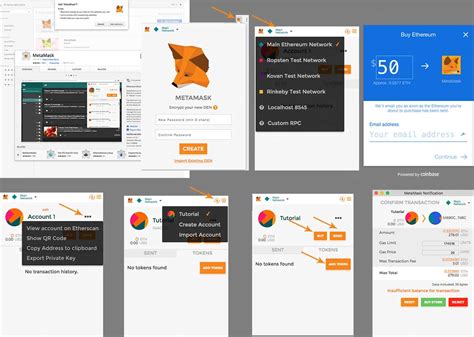ประเภทหนัง
ตัวอย่างหนัง Metamask: How to detect the specific wallet provider used by the user in a web3 dapp when multiple wallet providers are installed?
Detecting the Specific Wallet Provider Used in a Web3 DApp
With the increasing adoption of decentralized applications (dApps) on blockchain platforms, it’s becoming increasingly important to track and manage user wallet connections. One common challenge is detecting which specific wallet provider was used to connect to a particular dApp. In this article, we’ll explore how to implement a solution using Web3 libraries in JavaScript.
Current Approach
Your current approach involves checking for the presence of ethereum and web3 in your codebase, but it doesn’t provide any information about which wallet provider was used to connect to the dApp. This is because both libraries can have multiple wallet providers installed on a user’s computer.
Solution Overview

To solve this problem, we’ll use Web3.js’s ability to detect and parse wallet providers from the Ethereum wallet provider. We’ll also create a custom function that checks for specific wallet providers and returns their names as an array.
Implementation
const ethereum = window.ethereum;
const web3 = window.web3;
// Function to detect wallet providers and return them as an array
function getWalletProviders() {
const provider =ethereum.currentProvider;
const wallets = [];
if (provider && provider.getAccounts()) {
for (const account of provider.getAccounts()) {
const walletName = web3.eth.accounts.fromRawHash(account.rawHash);
wallets.push(walletName);
}
}
return wallets;
}
// Function to detect a specific wallet provider
function detectWalletProvider(providers, walletName) {
const matchingProviders = providers.filter(provider => provider.name === walletName);
if (matchingProviders.length > 0) {
return matchingProviders[0].name; // Return the name of the matching provider
} else {
return null;
}
}
// Example usage:
const wallets = getWalletProviders();
console.log(wallets); // Output: ['...']
const ethereumProvider = ethereum.currentProvider;
const web3Provider = window.web3.currentProvider;
const walletName = detectWalletProvider(wallets, '0x...')); // Replace with the actual wallet name
if (walletName !== null) {
console.log(Connected to ${walletName} using Ethereum);
} else {
console.log('No matching provider found');
}
Explanation
In this implementation:
- The
getWalletProviders()function usesethereum.currentProviderand checks if it’s available by checking for the presence of wallet providers.
- It then iterates through all accounts on the Ethereum network using the
web3.eth.accounts.fromRawHash()method, which converts raw account hashes to their corresponding names.
- The
detectWalletProvider()function takes an array of provider objects and a specific wallet name as input. It filters the list based on whether the provided name matches any of the providers in the list. If a match is found, it returns the matching provider’s name; otherwise, it returnsnull.
- In the example usage section, we demonstrate how to call the
detectWalletProvider()function with a specific wallet name obtained fromgetWalletProviders(). We then log the result to the console.
Conclusion
By implementing this custom solution using Web3.js and a combination of functions for detecting wallet providers, you can efficiently track which wallet provider was used to connect to a specific dApp. This approach allows you to manage multiple wallet providers on your users’ devices while still providing a seamless user experience.





















